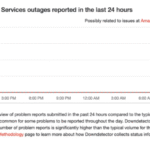
University Strike Escalates prompting Urgent Intervention from the CS
Reading Time: 2 minutesUniversity students will continue to stay at home after efforts to resolve the ongoing university lecturers’ strike faltered once more. A meeting convened by the National Assembly Committee on Education was once again called off after the Inter-Public Universities Councils Consultative Forum (IPUCCF) failed to provide documents proving that the government is ready to invest Ksh. 4.3 billion to facilitate the reopening of universities and bring students back to class. The committee was forced to summon three Cabinet Secretaries to address the issue. According to Committee Chairman Julius Melly, Education CS Julius Magoha, Labour CS Alfred Mutua, and National Treasury CS John Mbadi will appear before the committee next week to explain the government’s efforts to end the strike. READ MORE: SHA CEO Elijah Wachira suspended, Robert Ingasira appointed Acting CEO In a meeting involving the Education Committee, the Inter-Public Universities Councils Consultative Forum (IPUCCF), and the striking Universities Academic Staff Union (UASU), the university council failed to show that the Ksh. 4.3 billion needed to resolve the strike was available. Fred Simiyu Baraza, the IPUCCF Chairman, explained that the council had only managed to secure Ksh. 1.6 billion as an offer to the lecturers to end the dispute. However, the unions turned down this amount, demanding Ksh. 9.6 billion to implement the “Back to Work” agreement. “What we had available as a council was Ksh. 1.6 billion, but when UASU walked out on us, they went to the inter-ministerial committee, and that’s where the figure of Ksh. 4.3 billion was raised,” Baraza explained. He continued, “As the IPUCCF, we are under the Ministry of Education and do not issue commitment letters like the one you are requesting.” This response frustrated committee members, who accused the council of delaying the resolution process. “It is very disrespectful that we have met more than three times and still have no documentation on what we need. If they don’t have the documents, then let’s end this meeting. Why are they even here?” questioned Igembe North MP Julius Taitumu. Nabii Nabwera, the MP for Lugari, added, “Any government agency negotiating on matters that commit the government financially must have prior approval. This approval cannot be verbal. We are essentially asking the officer to provide us with a document they do not have.” In response to these frustrations, Chairman Julius Melly ended the meeting, announcing that the three Cabinet Secretaries would be summoned to appear before the committee on Tuesday, November 19, to address the issues raised regarding the ongoing strike.




